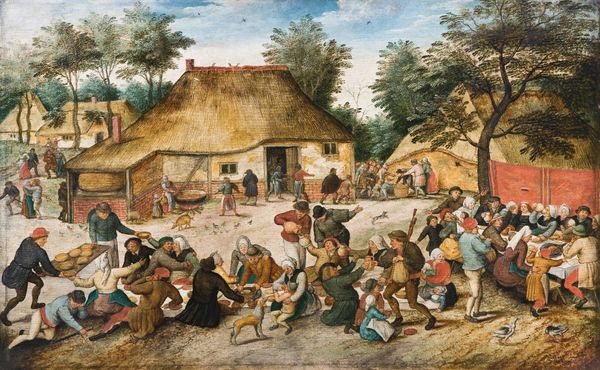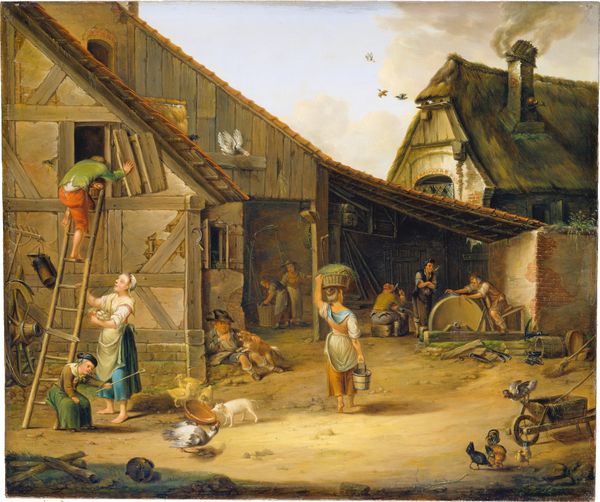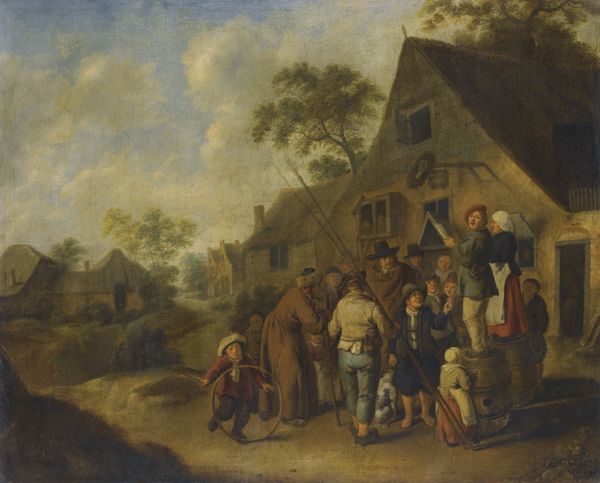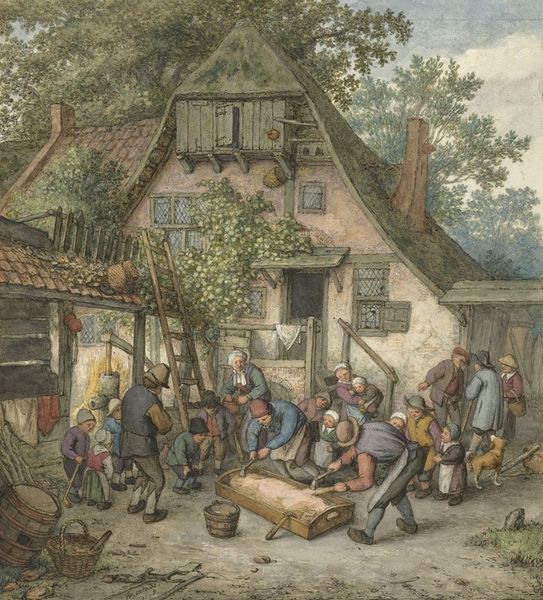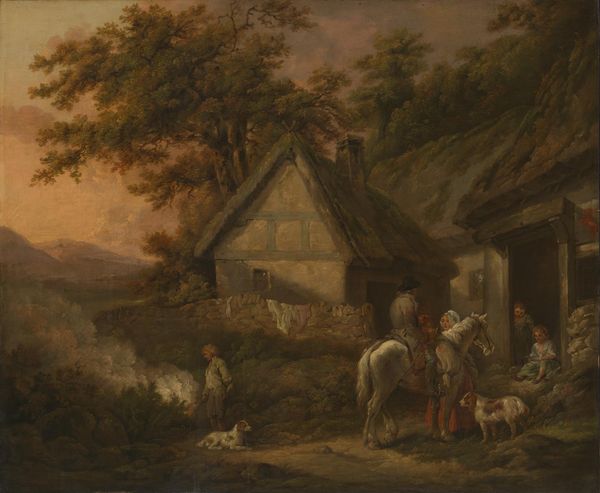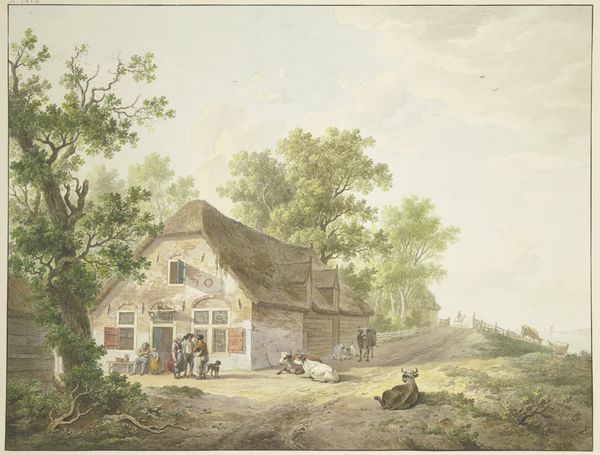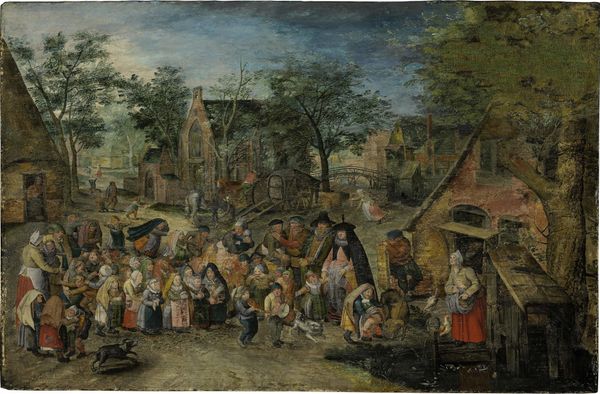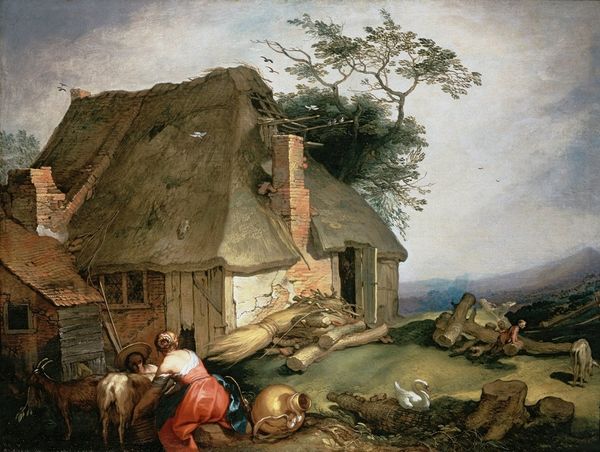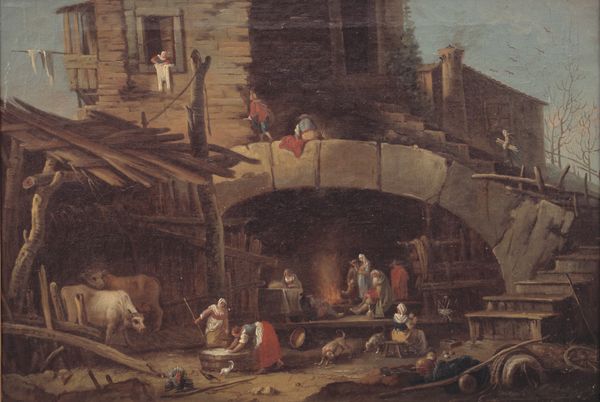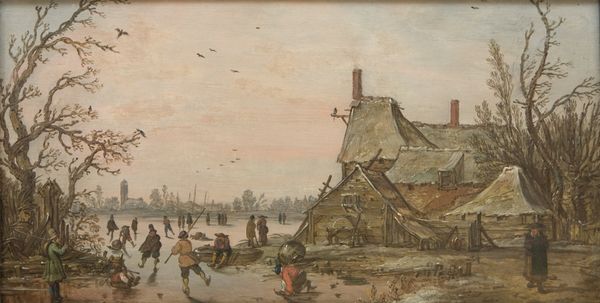
painting, oil-paint
#
painting
#
oil-paint
#
landscape
#
oil painting
#
genre-painting
#
northern-renaissance
Copyright: Public domain
Curator: Pieter Brueghel the Younger's painting, "L'auberge St. Michel," uses oil on panel to create a lively scene of a village inn. What strikes you initially about this image? Editor: There's a charming, almost idyllic quality at first glance, but something feels subtly…off. It’s like a stage set, and the figures are almost too animated, pushing toward chaos. The earth tones certainly contribute to the sense of stepping back in time. Curator: Indeed. The inn itself functions almost as a central symbol here. Note the heraldic shields adorning its façade. Inns were more than just places for food and rest; they served as vital communication hubs and played a crucial role in communal life. They're places of constant symbolic exchange. Editor: Absolutely, and Brueghel doesn't shy away from the less palatable realities either. This isn't just rural bliss; there’s a palpable sense of social dynamics, of maybe inequality too? There’s activity bursting forth from every opening of the inn – each offering its own distinct narrative thread. Curator: Notice the careful details like the various activities inside and outside the inn. Each gesture and interaction might reflect social conventions, perhaps even unspoken rules, hinting to those in positions of power or status. The shields and banners further elaborate an accepted societal structure, offering symbols of protection or identity. Editor: And while Brueghel is interested in genre painting that reveals scenes from daily life, I'd add that we can't remove ourselves from the awareness of historical context: from socio-economic strata and hierarchies – but also, even as basic as sanitation. It seems the villagers drinking, for example, represent a temporary liberation from their labor? Curator: Perhaps you are correct. There’s the obvious theme of everyday life, certainly, and the inn as the focal point emphasizes how certain cultural patterns reinforce social connections and status, through iconography. However, beyond the specific gestures, one is still left wondering the meaning or source of the inn's heraldry—a lost vernacular in time. Editor: That’s well put, it brings to mind what Roland Barthes described as “myth today”— how these images take on ideological values and implications that naturalize social conventions or power structures to become timeless symbols. Thank you, that's changed how I viewed this image! Curator: And thank you! This painting reveals how symbols permeate every level of visual expression, layering both an obvious reading with one hidden within time.
Comments
No comments
Be the first to comment and join the conversation on the ultimate creative platform.
